Spring Risotto is a porridge-like Italian dish featuring bright yellow corn and green peas, and round, medium-grain rice.
It gets deliciously plump, creamy and starchy by absorbing a hot stock added, one ladle at a time, during the cooking process.
The best rice to use in Spring Risotto
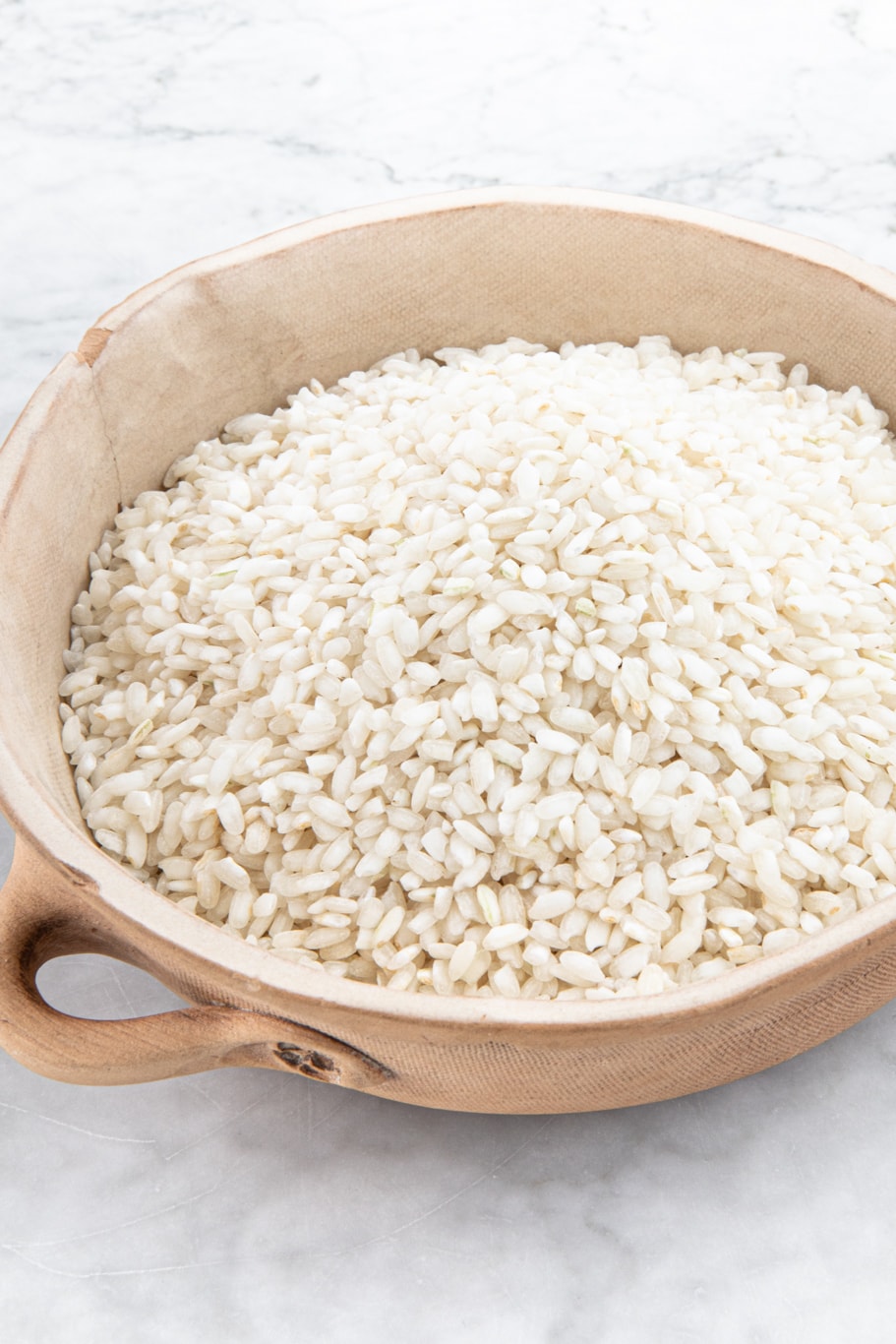
The Italian type of rice that you’ll use in risotto is very starchy and sticky, which is what you want to achieve a creamy texture. It’s different from long-grain rice, such as basmati, typically steamed or boiled.
Italians classify the short-grain rice in four categories depending on width and length, and how much amylopectin starch they contain:
- superfino
- fino
- semifino
- orginario
The three varieties of Italian rice used in risotto:
- ARBORIO – the most popular, widely available superfino risotto rice. It has short kernels, white center, and high starch content. It is named after the Arborio commune in the Vercelli province. Besides risotto, it’s also wonderful in a rice pudding.
- CARNAROLI – chefs swear by this variety because of the highest starch concentration, i.e. it gives you the best risotto texture. This superfino rice is the thickest and longest. It will remain al dente after cooking.
- VIALONE NANO – this is a semifino variety from the Verona region (like Romeo and Juliet!). The grains are short and round. You can use it in paellas, salads or Venetian-style risottos.
Whatever variety you’re getting, check the sell-by date for freshness.
Spring Risotto ingredients breakdown:
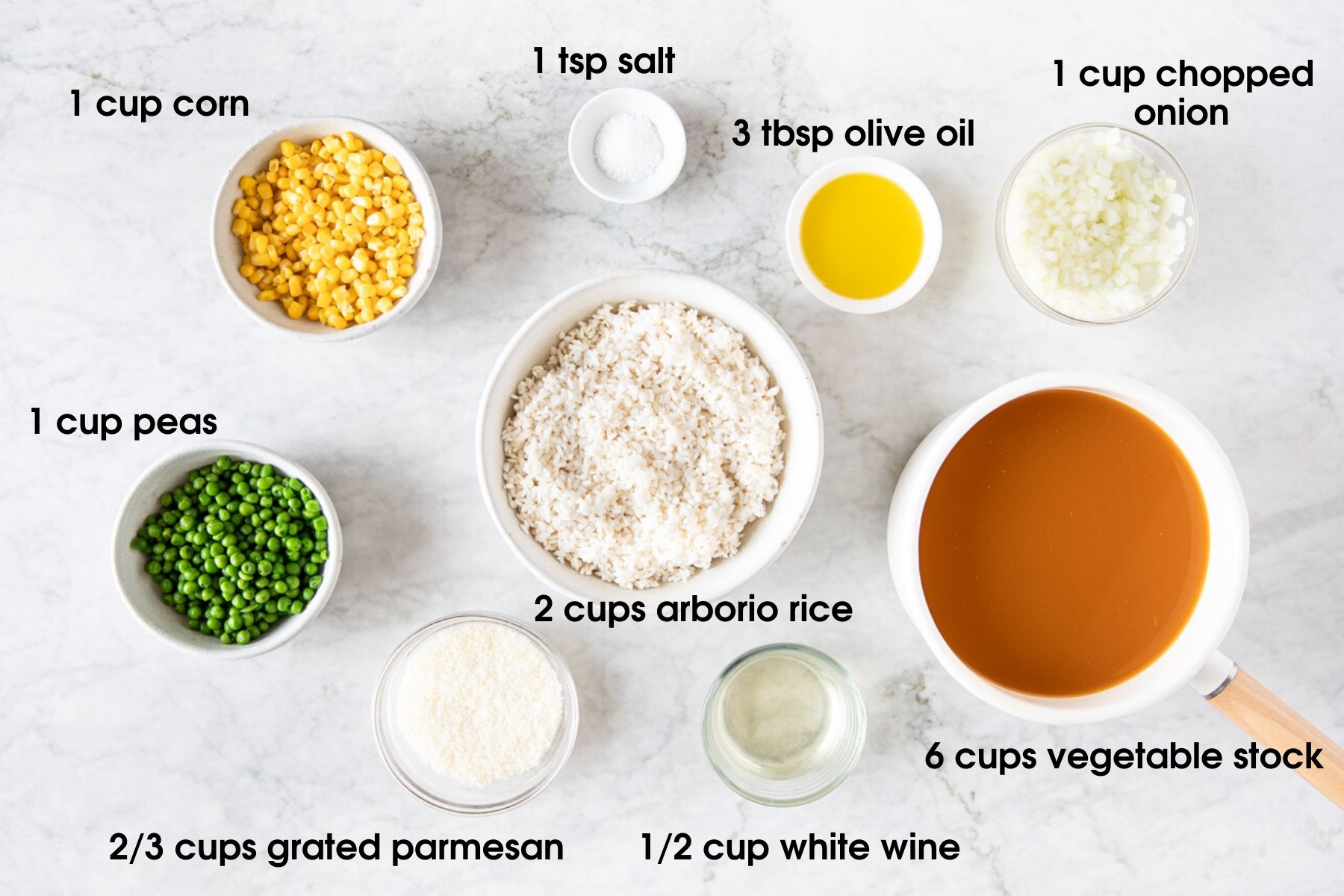
Like pasta, risotto is a versatile dish that’s ripe for interpretation.
I decided on a peas and corn combination, because I think the textures and colors sing perfectly together. White wine adds a wonderful layer to risotto, but you can skip it and just use broth.
- RICE – I used arborio rice, but carnaroli or vialone nano varieties would work, too. Don’t rinse the rice, because you don’t want to loose the starch/creaminess.
- PEAS AND CORN can be either fresh or frozen—whatever is easier for you. I don’t bother thawing when I use frozen ones, because they cook through quickly. Also, go for non-GMO corn if you can.
- PARMESAN – try to buy the best quality and grate it yourself! The already grated kind isn’t fresh and tastes like plastic IMO.
- WHITE WINE – should you spend tons of money on it? No. But you should also enjoy drinking it on its own. Somewhere in the middle is the best.
- VEGETABLE STOCK – I used an organic, store-bought, low sodium type. If you make your own, great. The color of your risotto depends on your stock. Mine was orange and so is my risotto.
- ONION – it adds a layer of sweetness to risotto. You can use any variety, even shallots.
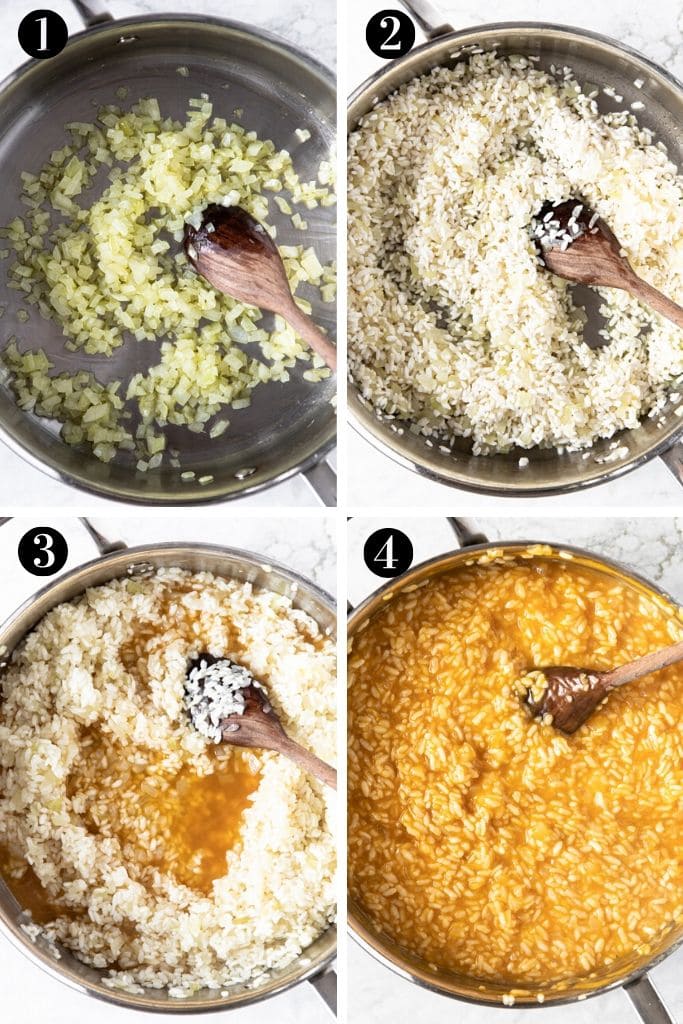
You will use two burners to make risotto—one with a pot of simmering stock, and one where you cook the rice.
Risotto requires constant stirring and your complete attention, because you need to monitor how the rice is soaking up the stock and prevent it from sticking or burning.
It’s actually fun and strangely calming.
Stirring slowly with a wooden spoon and alternating between a figure eight and clockwise/counterclockwise circles, for about half an hour you can meditate, daydream, contemplate the state of world affairs, or plan your next vacation.
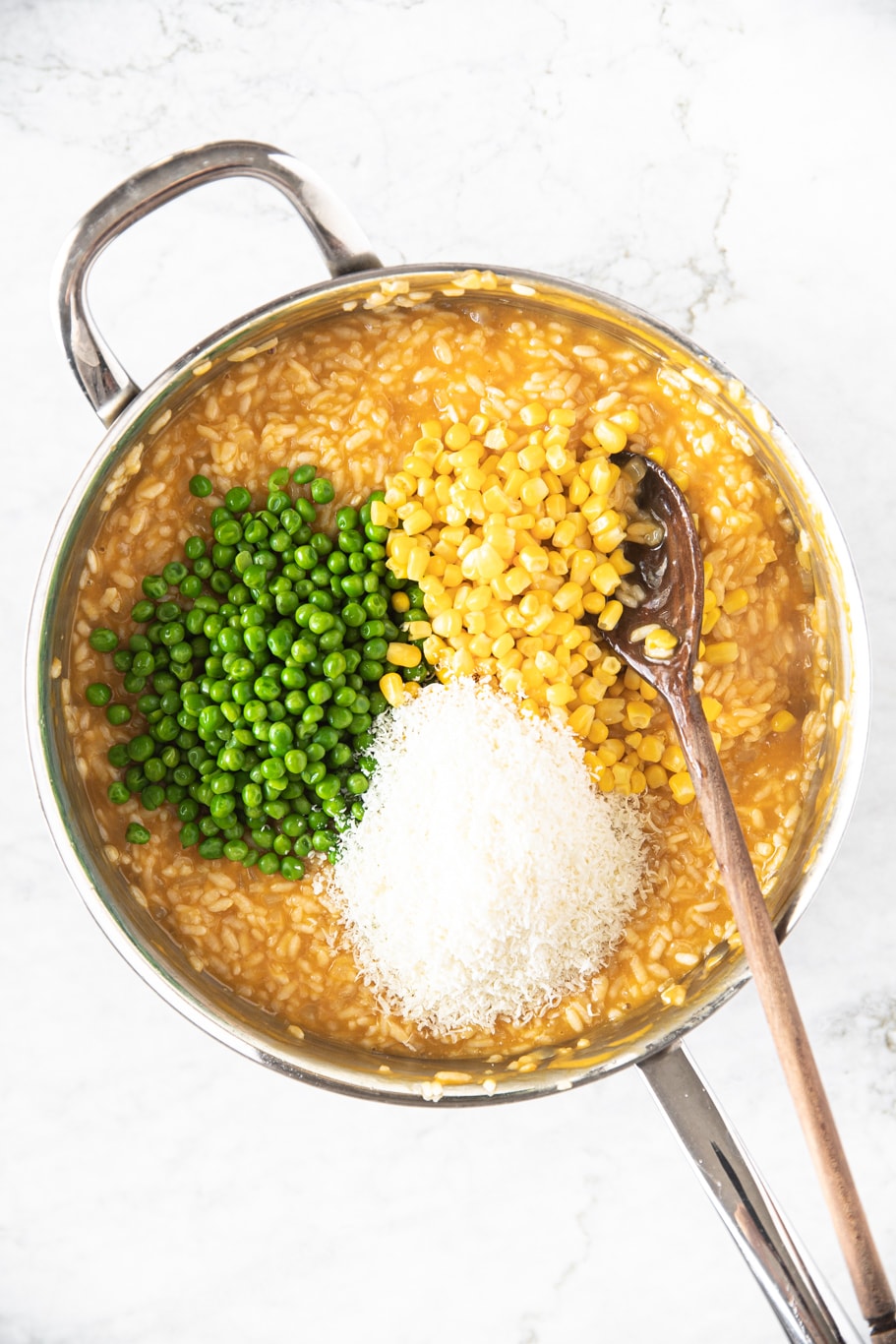
Spring Risotto cooking technique tips:
- Large sauté pan or Dutch oven are the best cooking vessels. You want a wide, shallow cooking surface with even heat distribution. Don’t make risotto in a small, high saucepan.
- Low-medium heat is the best to avoid sticking and burning.
- Be patient with adding the hot stock. One ladle (about 1 cup/240 ml) at a time, stir and wait for the rice to fully absorb it before adding the next one.
- Add plenty of stock at the end—you’re going for porridge-like texture, not like mashed potatoes.
- Season at the end. Add more salt and freshly ground pepper if you like, sprinkle with Parmesan, or top with crème fraiche and micro greens (optional).
- Serve immediately, because risotto will continue to cook/thicken.
What about risotto leftovers?
Leftovers is a good thing. You can easily reheat them or your can turn your risotto into arancini (rice balls).
- REHEAT risotto in a sauté pan (or microwave), by stirring in stock or water to loosen it and bring it back to porridge-like consistency.
- ARANCINI (Italian rice balls) – these are so delicious and a perfect appetizer to serve with a negroni. In fact, make extra risotto so that you can enjoy arancini the next day. Here’s the quick method: Roll cold risotto into small balls (golf-ball size), dip in unbleached all-purpose flour, dip in a lightly beaten egg, and finish by rolling in breadcrumbs. Fry in vegetable oil until golden brown.
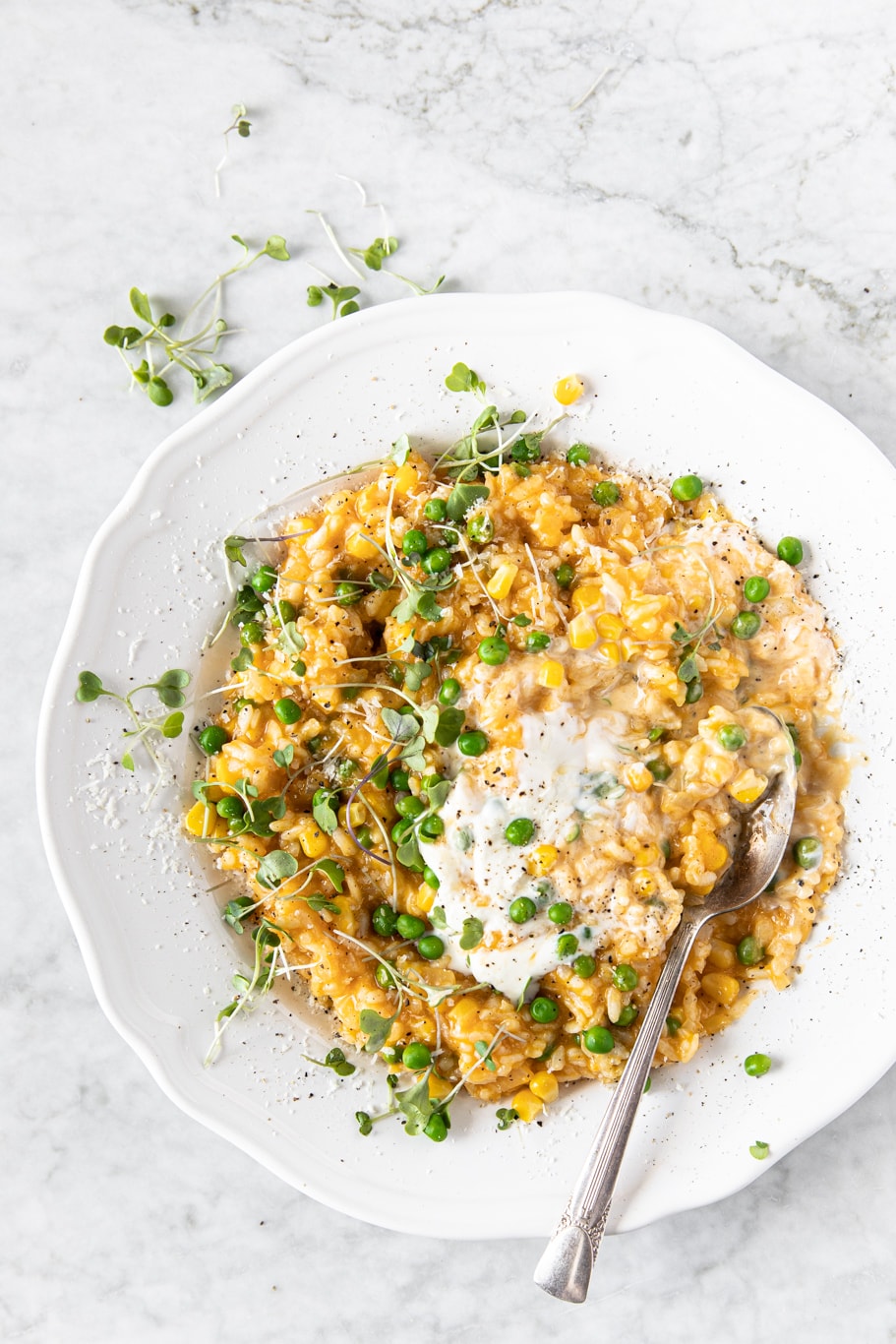
Hungry for more? Take a look at these:
Red Quinoa Soup With Corn, Carrot, and Zucchini
Zucchini Slices With Feta and Parsley
Raw Sprouted Lentil Chili Recipe
Harissa: North African Chili Paste
Soba Noodles Salad With Peanut Butter Dressing
Now you.
Have you made the Spring Risotto With Peas and Corn? Are you a risotto fan? How do you make it?
Tell me in the comments.
Print
Spring Risotto With Peas and Corn
- Prep Time: 10 min
- Cook Time: 30 min
- Total Time: 40 minutes
- Yield: Serves 4
- Cuisine: Italian
Description
Quick, creamy, and comforting! Make this risotto with just basic ingredients like arborio rice, peas, and corn, and eat in 30 minutes.
Ingredients
- 6 cups (1.5 liter) vegetable stock
- 3 tablespoons (45 ml) olive oil
- 1 cup (133 g) finely diced, peeled yellow onion
- 2 cups (354 g) Arborio or Carnaroli rice
- ½ cup (120 ml) white wine
- 1 teaspoon salt
- 1 cup (120 g) fresh or frozen peas
- 1 cup (120 g) fresh or frozen corn
- 2/3 cup (35 g) freshly grated Parmesan cheese
- Black pepper, freshly ground, to taste
- Crème fraiche (optional)
- Micro greens (optional)
Instructions
- In a medium saucepan, bring the vegetable stock to a simmer over medium-low heat.
- In a large sauté pan or Dutch oven, heat the olive oil over medium-low heat. Add the onion and cook, stirring occasionally, until soft and translucent, about 5 minutes.
- Add the rice, white wine, and salt. Stirring slowly, cook until the rice absorbs the wine, about 3 minutes.
- Ladle in the hot stock, about 1 cup (240 ml) at a time, and continue slowly stirring, letting the rice absorb all the stock before adding more. (This allows the starches to slowly release).
- The process of adding stock 1 cup at a time, continuous stirring, and the rice becoming al dente (firm but no longer crunchy), takes about 25 minutes.
- When the rice is al dente, stir in the peas, corn, Parmesan cheese, and about 1½ cups of stock, and cook, slowly stirring, for another 2 minutes. Turn the heat off.
- The consistency of the finished risotto should be porridge-like. The rice will keep absorbing the liquid and get thicker, so serve immediately.
- Top with freshly ground black pepper, crème fraiche and micro greens if you like.
- Store the risotto in the fridge for up to 3 days. Reheat by stirring in extra stock to bring it back to the porridge-like consistency.

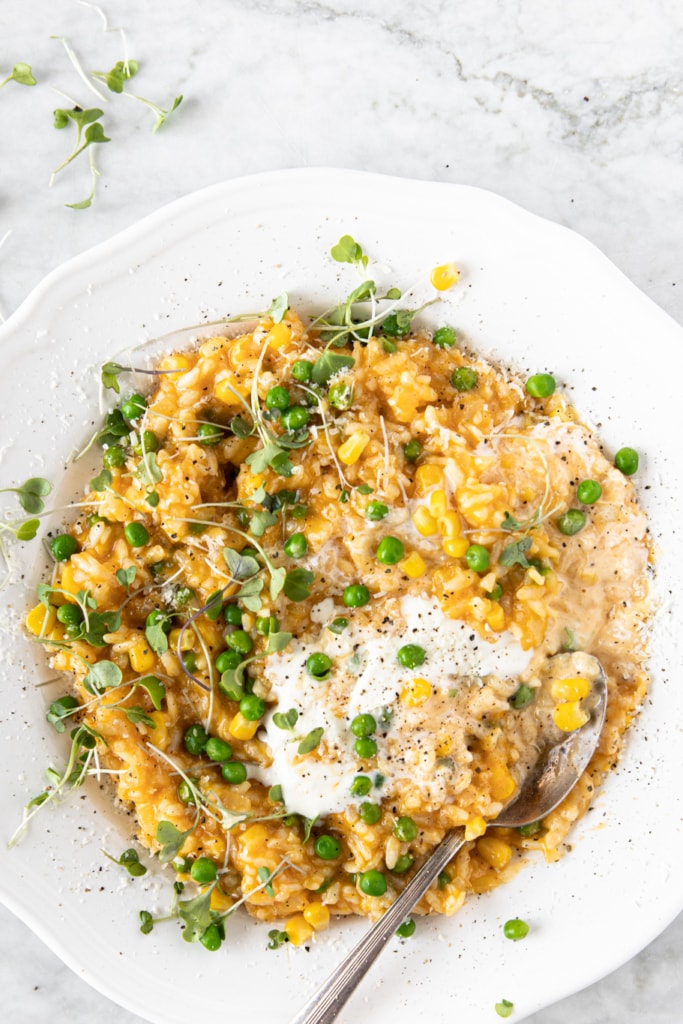


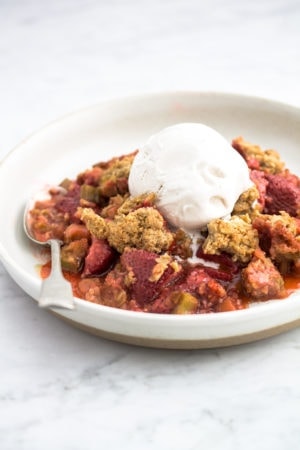

 buy me a flat white?
buy me a flat white?
Got something to say?